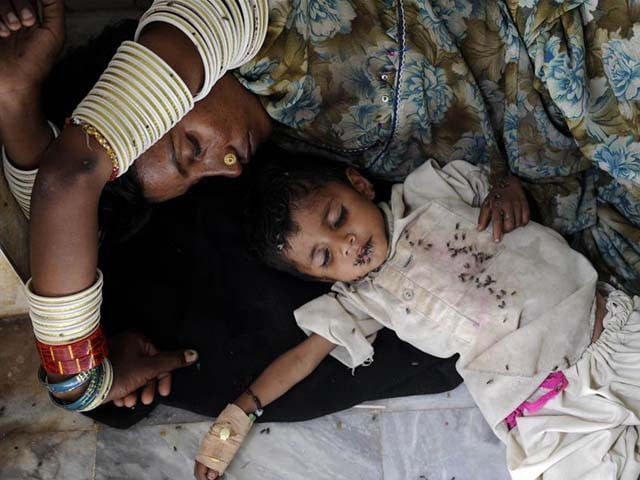In a developing country like Pakistan, maternal nutrition is of paramount importance. A significant proportion of women in the country face undernutrition, obesity/being overweight or micronutrient malnutrition. Nearly 177, 000 annual deaths in Pakistan are linked to maternal and child malnutrition. Coupled with household food insecurity and a lack of adequate antenatal and postnatal services, lack of adequate hygiene and sanitation measures further exacerbate female nutritional status and expose women to infectious diseases. Other determinants of malnutrition include poverty, gender inequality, urbanisation, conflict and low levels of education.
The determinants of maternal malnutrition, while multifaceted in nature, include lack of food security and dietary diversity, limited or no access to adequate healthcare services, low quality of healthcare, existence of early marriage and childbearing norms, limited female education and employment opportunities as well as limited female agency existing in households. A significant proportion of households in Pakistan, 37% to be exact, face food insecurity, with this number being higher in rural, underdeveloped regions of the country. Furthermore, a mere 27.8% of women of reproductive age meet the minimum dietary diversity (MDD) requirements – a dismal figure.
This number too is higher among lesser educated and lower income households. Moreover, both antenatal and postnatal care services are not adequately utilised by women. This is concerning, more so due to early marriage and childbearing practices with 29% of women in Pakistan being married by the age of 18. On the socioeconomic front, the picture is bleaker. In terms of education, 50% of the female population of the country is uneducated, with only 17% being formally employed in the labour market of Pakistan. Within the household as well, female bargaining power is limited at best, with 51% women being able to make decisions regarding their own healthcare and 44% being able to make decisions regarding household purchases; 39% of women do not participate in any household decision-making activities.
To address this pressing issue, the Pakistan Maternal Nutrition Strategy 2022-27 has been developed based on Sustainable Development Goal (SDG) 2 that aims to account for maternal malnutrition by promoting adequate dietary intake to ensure the well-being of the female populace. The main goal of this strategy is to achieve optimal nutrition among females and to address their needs, especially during preconception, pregnancy and postpartum stages of their lives by adopting maternal nutrition interventions that are both scalable and equitable in nature.
Through such a policy measure, important indicators such as the proportion of women who are underweight, overweight, obese, anaemic and vitamin A and D deficient are aimed to be reduced, while those meeting minimum dietary diversity (MDD) and consuming the recommended amount of iron, folic acid and micronutrient supplements is expected to be ameliorated. This is expected to be achieved by the implementation of evidence-based nutrition programmes.
Maternal nutrition has far-reaching implications for generations to come. Because of this, it is imperative that concerted efforts are made to ensure that the Maternal Nutrition Strategy is effectively adopted not only by the government but also by civil society and non-governmental organisations. To ensure effective implementation of maternal nutrition interventions, it is pivotal for a diverse set of platforms to be used. Primarily, adequate healthcare services such as nutrition counselling, treatment of malnutrition as well as availability of micronutrients and energy protein should be made available at basic health units and rural health centres. Furthermore, community mobilisation and outreach activities can be adopted to raise awareness so that pre-existing gender norms can be updated with relevant maternal health information.
Interpersonal and group counselling can be done during home visits and media such as television and radio can be utilised to disseminate information regarding maternal nutrition. With respect to adequate data collection, health surveys such as the Pakistan Demographic and Health Survey (PDHS) and Multiple Indicator Cluster Survey (MICS) should include more data on maternal nutrition. An example of this would be the inclusion of indicators such as minimum dietary diversity for women (MDD) as well as the presence of questions on nutrition counselling in the eight phase of the DHS survey.
It is only through an integrated and well-rounded, comprehensive approach adopted simultaneously by policymakers, organisations, government bodies and other relevant stakeholders that it can it be hoped that female nutritional vulnerabilities are effectively curbed and optimal nutrition levels are achieved.



COMMENTS
Comments are moderated and generally will be posted if they are on-topic and not abusive.
For more information, please see our Comments FAQ